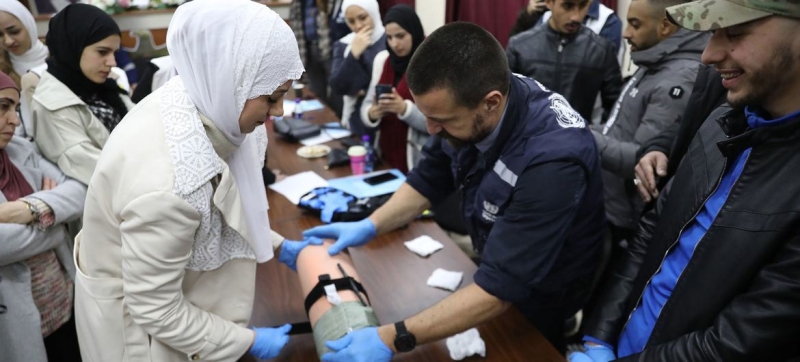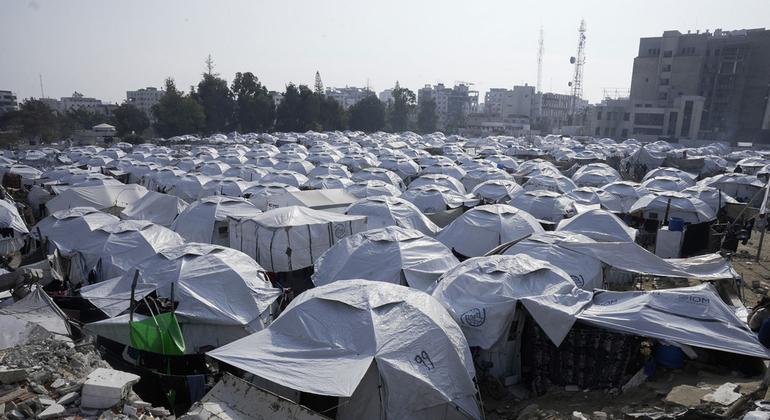
WHO is delivering medical supplies to Gaza. Gaza: WHO calls for all routes to evacuate patients and deliver vital supplies to open Humanitarian aid
Two weeks after the ceasefire in Gaza came into force, the World Health Organization reports progress in the delivery of humanitarian aid. At the same time, WHO emphasizes the need to increase the scale of medical evacuations and facilitate access for supplies of medicines and equipment.
Speaking from Jerusalem to reporters in Geneva, WHO representative in the occupied Palestinian territory Rick Pieperkorn noted that the organization is actively increasing the volume of aid, but “it is necessary to open all border crossings to deliver a variety of food, shelter and basic necessities, especially as the approaching winter”.
Gaza’s health system has been destroyed after two years of war, with only about 2,100 hospital beds available in the enclave for its 2.1 million residents, a WHO official said. Several major medical facilities are beyond the reach of the population because they are outside the area from which Israeli forces withdrew earlier in October.
Medical evacuations
B More than 170 thousand people were injured during the conflict, and many patients cannot receive the necessary treatment. On Thursday, WHO conducted the first medical evacuation since the beginning of the truce – 41 patients and 145 accompanying persons were taken to various countries. The organization plans to increase the number of evacuations to 50 patients per day.
“It is especially important to resume the referral of patients for treatment to hospitals in the West Bank, including East Jerusalem,” he emphasized. Peppercorn
He also called for the Rafah crossing to be opened for daily medical evacuations to Egypt.
“We need more countries to accept patients – the spokesman added WHO. – Two evacuations are planned for the next week, but we want them to happen every day.”
Humanitarian supplies
Answering the question About the first meetings of the Civil-Military Coordination Center created by the United States to implement the terms of the truce, Pieperkorn expressed hope that the new mechanism will speed up the delivery of aid and, in the future, the supply of equipment for recovery and reconstruction.
He noted, that WHO has provided a consolidated list of drugs and medical supplies used in all hospitals around the world and is seeking uniform approval for their supply, which will reduce delays.
“We understand that the road ahead will be long and difficult, with many obstacles,” said the WHO representative. “But we can only hope that this truce will continue and we will achieve peace and political solution.”
Preparing for the cold season
Meanwhile, since the announcement of the truce on October 10, the International Organization for Migration (IOM) has sent more than 47 thousand units of humanitarian aid to Gaza. Of these, 31 thousand units – items for housing, including 2,500 tents, which will help internally displaced persons live in safer and more dignified conditions.

“The people of Gaza have suffered unimaginable losses,” said IOM Director-General Amy Pope. – They need help that can reach them quickly and safely, through all possible routes. Shelter is not a luxury, it is what allows families to stay warm and begin to rebuild their lives.”
About 90 percent of the population remains without permanent shelter, and 1.5 million people are in need of emergency shelter, according to aid agencies. assistance.
IOM has prepared millions of essential items for rapid dispatch, including 28 thousand tents for 168 thousand people, as well as blankets, mattresses, hygiene kits and 4.1 million winterization supplies.
Despite the truce, delays at customs, limited crossings and ongoing instability continue to hamper the delivery of aid. The organization is prepared to deploy operations as quickly and as extensively as conditions and access provided by the Israeli authorities allow, in accordance with humanitarian principles.
